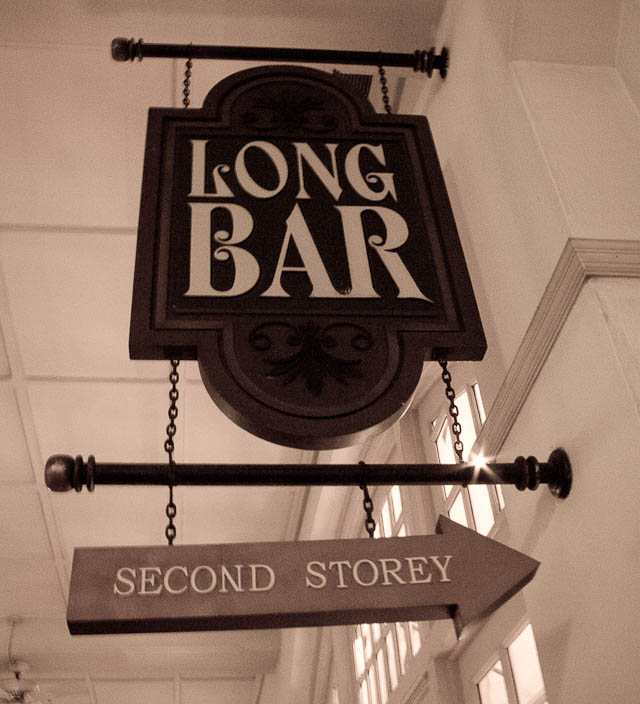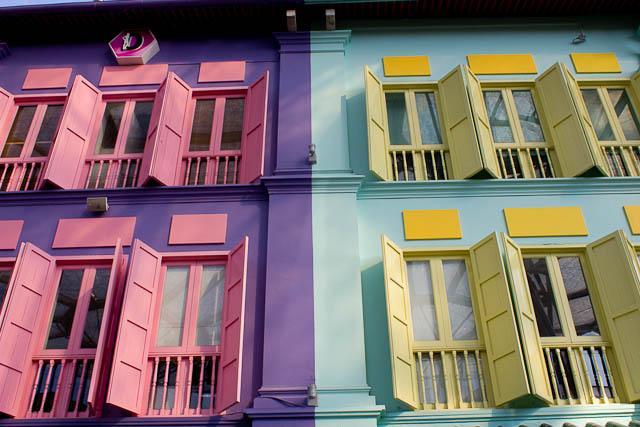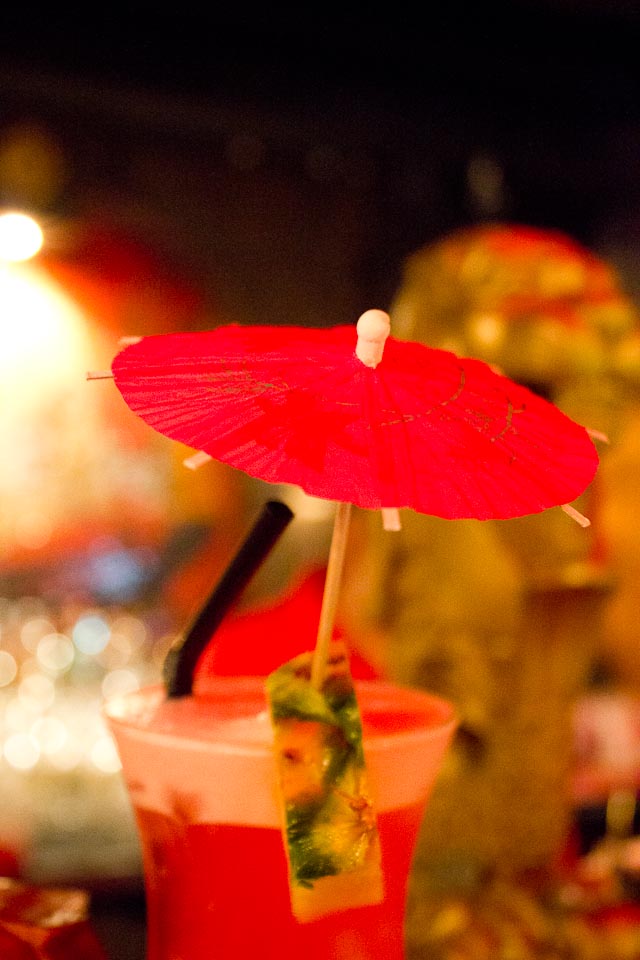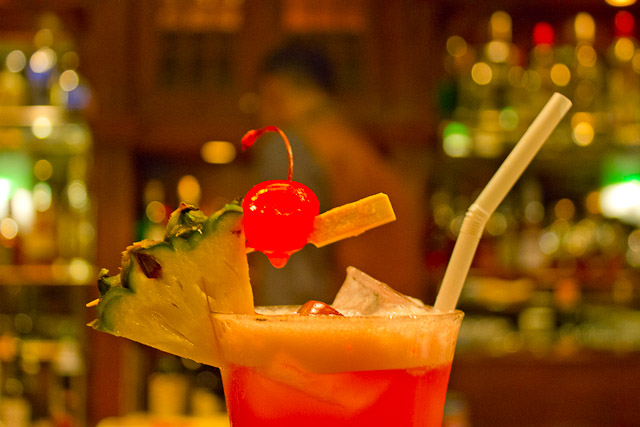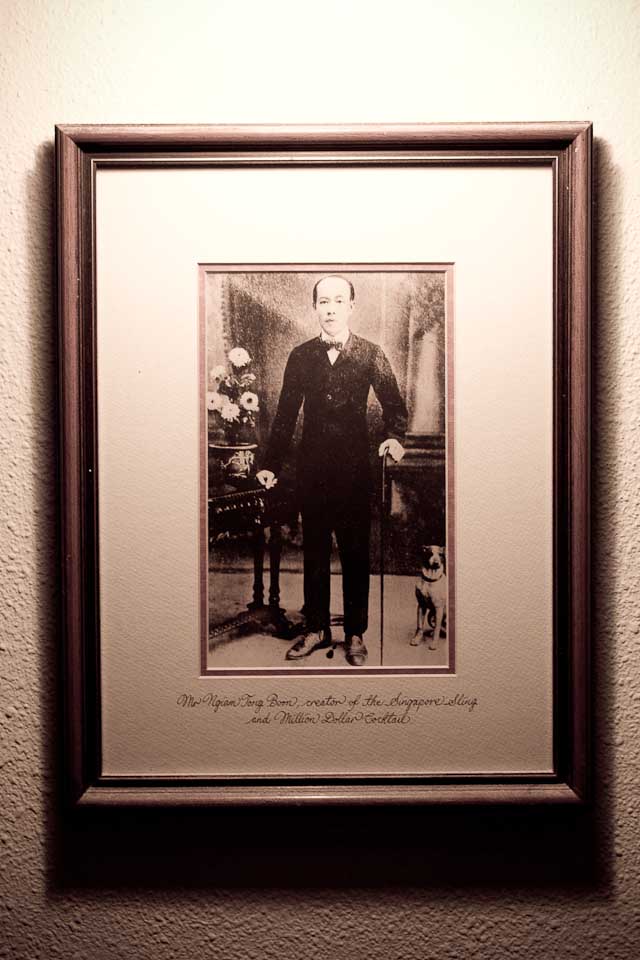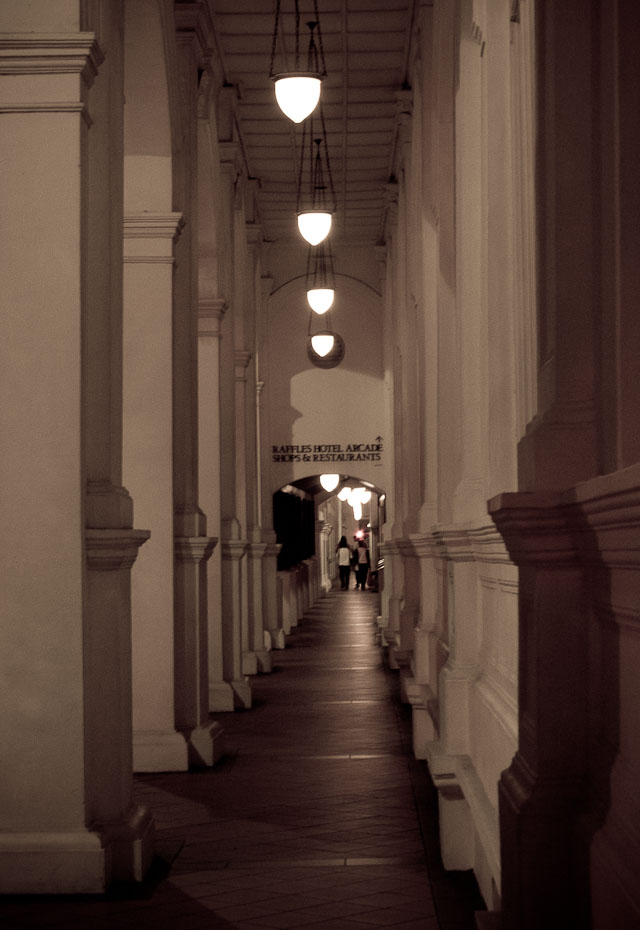A Curious Tale: Who Invented the Singapore Sling?
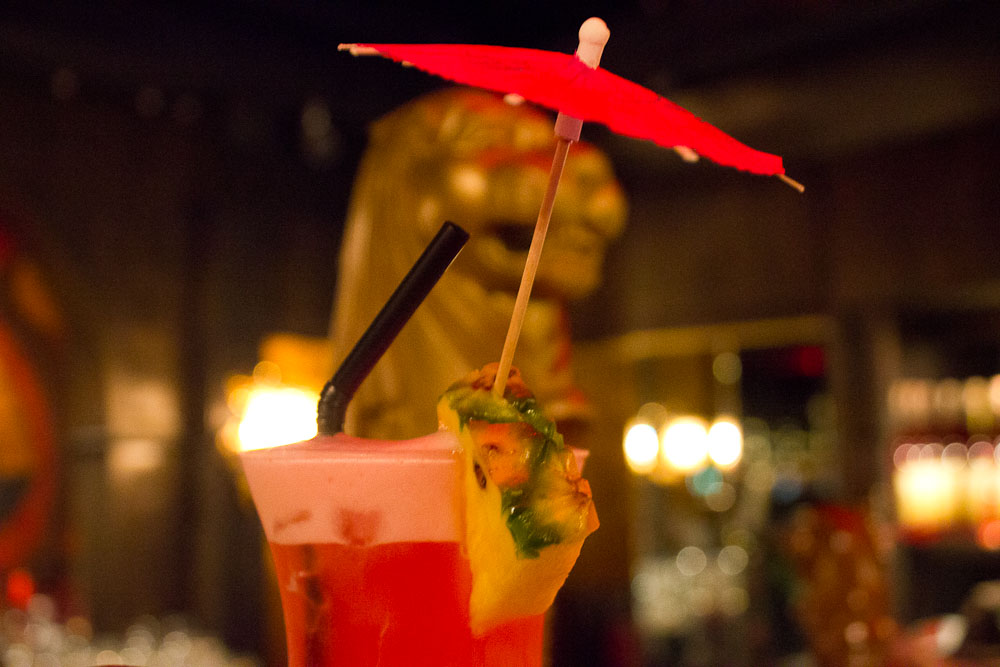
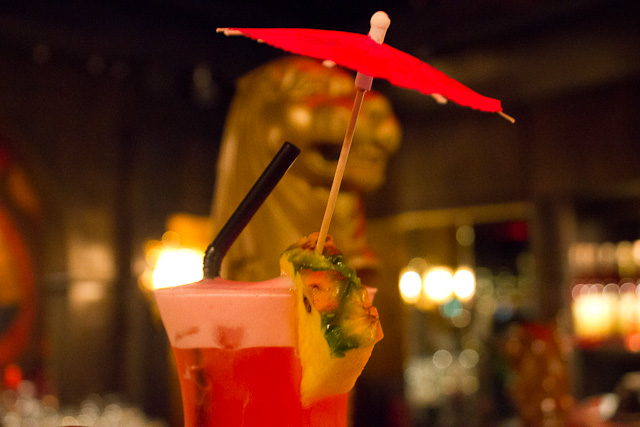 Raffles Hotel, Singapore, is celebrating its 125th anniversary this month. (This despite the fact that the hotel didn’t open until 1 December 1887.)
Raffles Hotel, Singapore, is celebrating its 125th anniversary this month. (This despite the fact that the hotel didn’t open until 1 December 1887.)
And, perhaps predictably, they’re celebrating with an anniversary cocktail, the 1887, based on the iconic Singapore Sling, with added champers, reduced pinkness and ye traditional oh-so-secret recipe.
So, who invented the Singapore Sling?
Now, if you believe the good folk at Raffles, their head bartender, Ngiam Tong Boon, invented the Singapore Sling in 1915. It was subsequently enjoyed by celebrities from Noel Coward to Somerset Maugham.
And today the Singapore Sling is a tourist icon.
The Long Bar at Raffles Hotel is a routine stop on coach tours of the city, where folk crunch across a carpet of peanut shells to imbibe pink, sweet drinks churned out from premixes behind the bar.
And at around US$25 per drink, with over a thousand sliding across the bar every day, the Singapore Sling is worth, at a conservative estimate, nigh on $10 million a year to the hotel.
But it doesn’t stop there.
The tourist end of the entertainment ghetto of Clarke Quay boasts a Singapore Sling Boutique devoted to premix versions of the cocktail (in fact, you can even buy Singapore Sling chocolates, which are every bit as tooth-hurty as the name would suggest).
And upscale bars around the city will typically have at least one take on the Singapore Sling on the menu. The ones at Orgo are made with fresh fruits, while the Post Bar at the Fullerton Hotel offers variants including flavourings such as vanilla.
But how much does the Singapore Sling really have to do with Raffles? Who invented the Singapore Sling?
And how much does the drink that Raffles serves have to do with that invention?
Let’s start with the Raffles version, a recipe presented on cards in the bar, and work back. According to them, Ngiam Tong Boon, their head bartender, invented the Singapore Sling in 1915, and this is his recipe:
30 ml (1 oz) gin
15 ml (1/2 oz) cherry brandy
120 ml (4 oz) pineapple juice
15 ml (1/2 oz) lime juice
7.5 ml (1/4 oz) Cointreau
7.5 ml (1/4 oz) DOM Benedictine
10 ml (1/3 oz) grenadine
A dash of Angostura bitters
Garnish with a slice of pineapple and cherry.
This is, surely, Ngiam Tong Boon’s original recipe, right? The one he invented, locked up in a chest and kept closely guarded, as with all the best secret recipe stories?
Well, umm, no. It’s based on a recipe scrawled on the back of a till receipt by a *customer* in 1936 who asked how the drink was made (at a time, intriguingly, when a Singapore Sling fizzy pop was circulating in the US).
1936 was three years after Raffles hotel went under new management, eighteen years after Boon died, and under six years before Japanese troops invaded Singapore, occupied Raffles and turned it into the Syonan Ryokan (Light of the South). Preservation of cocktail recipes was not a priority for either the Japanese or the Allies who used the building as a POW transit camp after the war.
Let’s track back a little.
As it happens, there are quite a few published recipes for the Singapore Sling. A Sling is one of the earliest types of cocktail, and typically appears as a mix of citrus, sugar, spirit and water, later soda water.
So your entry level Gin Sling would be: lemon, sugar, gin and soda water, over ice.
Look! No pineapple juice!
And, if you take a look at other cocktails with fruit juice from around this time, such as the Bronx (1906), (recipe via Diffordsguide), you’ll find juice is a highlight rather than an all-embracing dilutant.
1½ shot Bombay Original London dry gin
¾ shot Martini Extra dry vermouth
¾ shot Martini Rosso sweet vermouth
1 shot Freshly squeezed orange juice
The Bronx, here, has three shots of booze to one shot of juice, and that’s not an atypical ratio by any means.
Now, the first recipes that appear for the Singapore Sling in old cocktail books – Robert Vermeire (1922), Harry Craddock (1930), Charles H. Baker (1939) and Trader Vic (1948) – all feature gin, cherry brandy and soda. The good ones include lemon, most include Bénédictine, and not one has even a drop of pineapple juice.
So it looks a bit as though the original Singapore Sling is, essentially, a gin sling with a hit of cherry brandy, a pink, fizzy, transparent drink. Not one source mentions who invented it, so let’s track back a bit further.
The cocktail historian David Wondrich has spent time scouring the newspapers of Singapore (you can read about this here).
Wondrich reports that the earliest reference to a sling is from 1897, and that, by 1903, the sling was pink (i.e., most likely, contained cherry brandy).
He finds a 1913 take on the recipe which works out roughly as follows:
1 shot Gin
1 shot Cherry brandy
1 shot Bénédictine
Lime juice
Bitters
Soda water
Ice
This doesn’t only closely match the recipe from Vermeire’s 1922 cocktail book, but fits Coward’s account of drinking “gin slings” at Raffles.
Because a fizzy long drink with gin in it is, fundamentally, a sling, where as something with four whole ounces of pineapple juice ain’t.
And, obviously, 1913 is two full years before Ngiam Tong Boon invented his cocktail, according to Raffles.
So… Where does Ngiam Tong Boon come into this? If not him, who invented the Singapore Sling?
And, further, how the hell did four ounces of gloopy pineapple end up in the drink?
Well. Ngiam Tong Boon’s name makes its first significant appearance in US newspapers during the 1970s, long after his death.
At this time, a manager of Raffles, named Roberto Pregarz, had the smarts to revitalise his tired hotel into an international icon. And one part of his global PR push was to reawaken the Singapore Sling, an effectively forgotten drink, and tie it to his hotel.
You don’t get much more 70s, when it comes to cocktails, than the Singapore Sling.
Just take a look at it. It’s pink! It has an umbrella! It’s tropical! It’s like the afterbirth of Tiki drinks.
So, did Pregarz just make it up?
Well, one might think so. At the time, a nephew of Ngiam Tong Boon, Ngiam Dee Saun, was wheeled out to explain to the waiting press that his uncle had indeed invented the Singapore Sling, and this was indeed his recipe (more here).
This Ngiam, too, worked for Raffles, and some of the more credulous press reports at the time claim that every member of the Raffles bar staff was related to the late, great Ngiam Tong Boon.
But…
In 2010, Singapore’s Straits Times newspaper took yet another Singapore bartender, descended from Ngiam Tong Boon, Albert Yam, round the houses to check out the local cocktail. Yam was not on the Raffles payroll and said of the drink:
“This is not the Singapore Sling. This is not the cocktail my relatives had taught me to make. The recipe that was handed down to me is a refreshing cocktail with fruity notes of pineapple and lime juice, with hints of gin and angostura bitters. It is sweet, never saccharine sweet.”
Couple this with the fact that Boon’s only other creation to have survived, the Million Dollar Cocktail, also including a hint, or “notes” of pineapple, and it seems likely that Boon’s own creation did include pineapple.
Most likely a little pineapple, not a lot (there’s half a shot of pineapple to three shots of booze in Diffordsguides’ recipe for the Million Dollar Cocktail). Because a little pineapple goes a very, very long way.
Unless, of course, you don’t like the taste of alcohol, you’re raised on Tiki drinks, or you have a very sweet palate. In which case the hot pink, eminently slurpable things knocked out from behind the bar at the Long Bar will continue, unfortunately, to hit the spot.
So, is the Raffles version the true Singapore Sling?
Well, given almost every bar in Singapore includes pineapple in its Singapore Sling, it would be reasonable to say that, whoever invented the drink, Raffles has won this one.
But smarter bars in Singapore now also serve the earlier “original” Singapore Sling, most often under the name “Straits Sling”.
And, if you’re after something long, pink, but rather more refreshing than the pineapple slop, this is, I reckon, the way to go.
As to who invented the earliest Singapore Sling? That, I’m afraid, remains lost in the mists of time.
